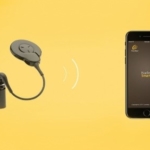By Patti Trautwein, MA, AuD, Vice President, Product Management & Marketing, Cochlear Americas
Less than 25% of people get their hearing screened annually and more than 37 million (15%) Americans have hearing loss.1-2 Less than 30% of people who can benefit from hearing aids1, 2 and approximately 8% from cochlear implants have them.3
As an audiologist, this data can be frustrating. There have been tremendous advancements in technology in the last few decades, including more treatment options with devices that are smaller, smarter and deliver better outcomes. Despite these advances, why haven’t the growing number of people with hearing loss accessed treatment? Recent clinical and market investigations have identified awareness, acceptance, cost and stigma as primary obstacles to adopting hearing devices.4
A recent article by Christopher Spankovich reviewed the history of defining hearing loss using the audiogram versus other measures such as speech or objective measures, explaining how the past five decades encapsulated the rationale for 15- 25 dB HL as the limit for normal hearing.5 Importantly, the author noted strong correlation between pure tone average and perceived hearing difficulty. Most interesting, Spankovich reported that when asking audiologists what normal hearing is, “not surprisingly, you get a variety of responses.”
How does the variability across clinicians transcend to the general population’s understanding of normal hearing?
For example, Cochlear’s industry research highlights how people described hearing and noted the variability. Some used words such as mild, moderately severe, significant or deaf, while others used percentages of loss or percentages of hearing remaining.
So, do people know what is normal hearing? The team decided to go out on the street to find out:
Raising awareness of a simple metric, such as 20 dB PTA, for normal hearing may help the general population understand hearing health. Further, it may provide guidance on when to seek clinical evaluation, treatment and even what type of treatments to consider. This becomes increasingly important as the options expand to include over-the-counter devices in addition to hearing aids or hearing implants, making it more important for consumers to get the support of an audiologist or ENT. A simple and consistent metric streamlines to the process for consumers and allied health providers to monitor and act on hearing health, as they are likely to do with other health considerations such as vision or cholesterol.
Is this a call to action for hearing health care providers to align on the simple answer that the general public can understand? Please share the video with your colleagues and start the conversation so we can work together to improve access to appropriate hearing healthcare.
To learn more, subscribe to Cochlear ProNews.

About the author: Patricia’s 25 years in the hearing healthcare industry includes roles in research and clinical studies, product management, education and training, sales and marketing. As Cochlear America’s VP of Marketing, Patricia is responsible for the marketing strategy, communications and public relations, brand ambassador program and product management. Her organization is responsible for positioning Cochlear Americas growth strategy, cultivating opportunities in new and existing customer markets and growing demand for Cochlear’s hearing solutions in the region.
References:
1. Abrahms, H and Kihm, J (2015) MT9 reveals renewed encouragement as well as obstacles for consumers with hearing loss. Hearing Review https://www.hearingreview.com/practice-building/marketing/introduction-marketrak-ix-new-baseline-hearing-aid-market (accessed on Sept 14, 2020)
2. Quick Statistics About Hearing. (2020, October 2). NIDCD. https://www.nidcd.nih.gov/health/statistics/quick-statisticshearing#:~:text=One%20in%20eight%20people%20in,based%20on%20standard%20hearing%20examinations.&text=About%202%20percent%20of%20adults,54%20have%20disabling%20hearing%20loss.
3. Holder, J., Reynolds, S., Sunderhaus, L., Gifford, R. (2018) Current Profile of Adults Presenting for Preoperative Cochlear Implant Evaluation Trends in Hearing Jan-Dec.
4. Kochin, S. (2007) MarkeTrak VII: Obstacles to adult non-user adoption of hearing aids, he Hearing Journal: April 2007 – Volume 60 – Issue 4 – p 24-51
5. Spankovich, C. (2020) Some observations on normal hearing and hearing loss. Audiology Today Sep/Oct 2020 pgs. 32-41.


